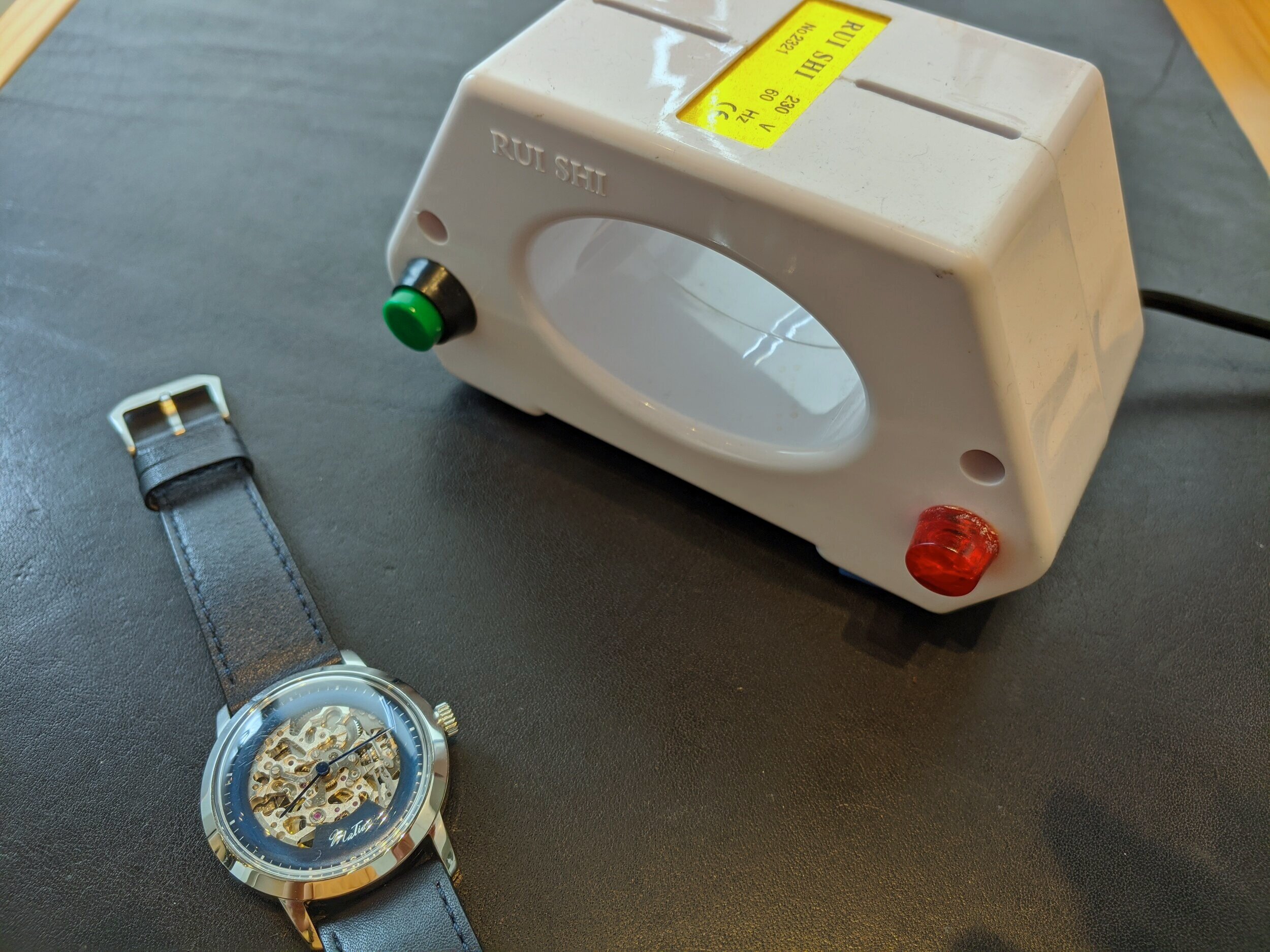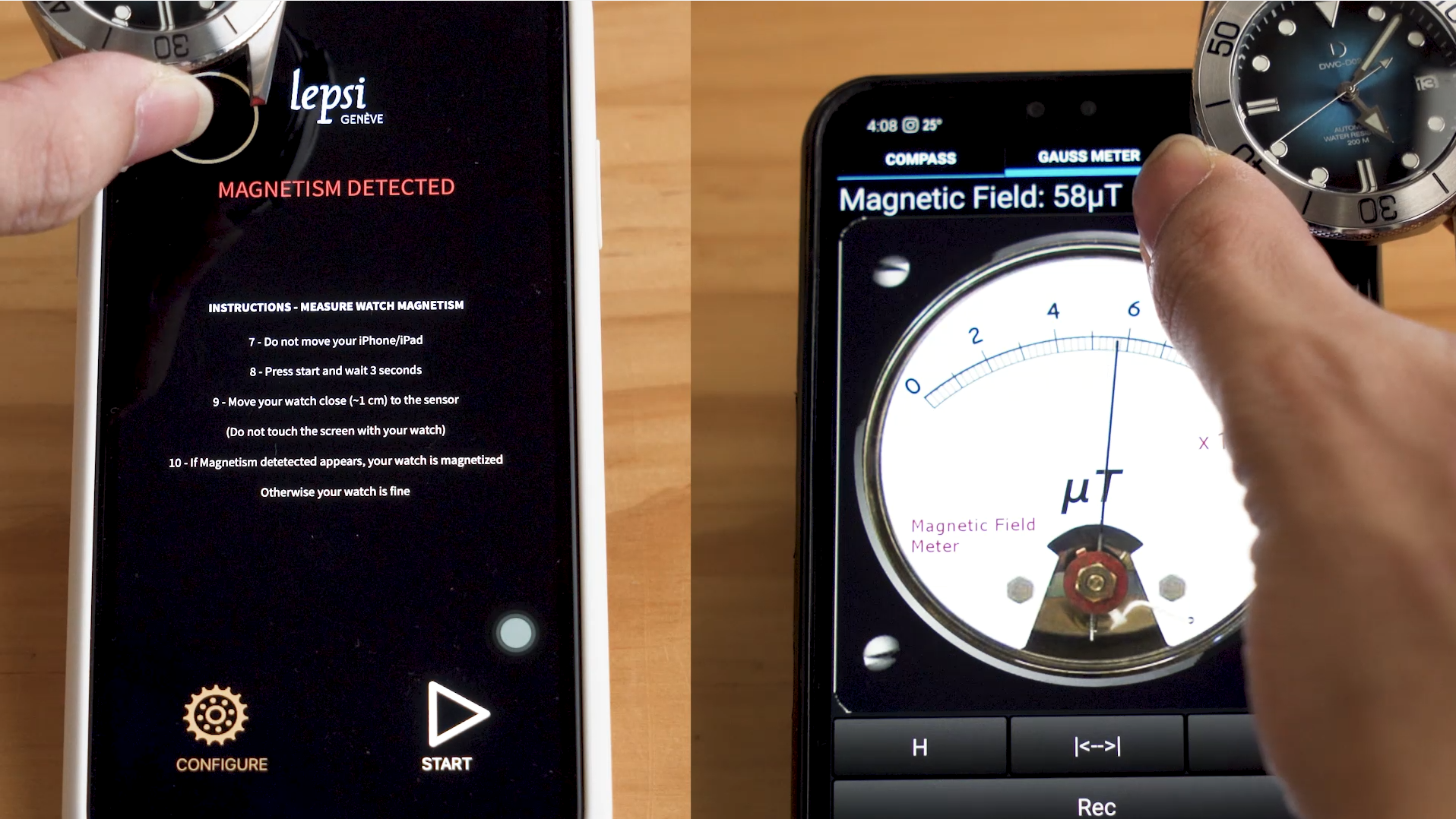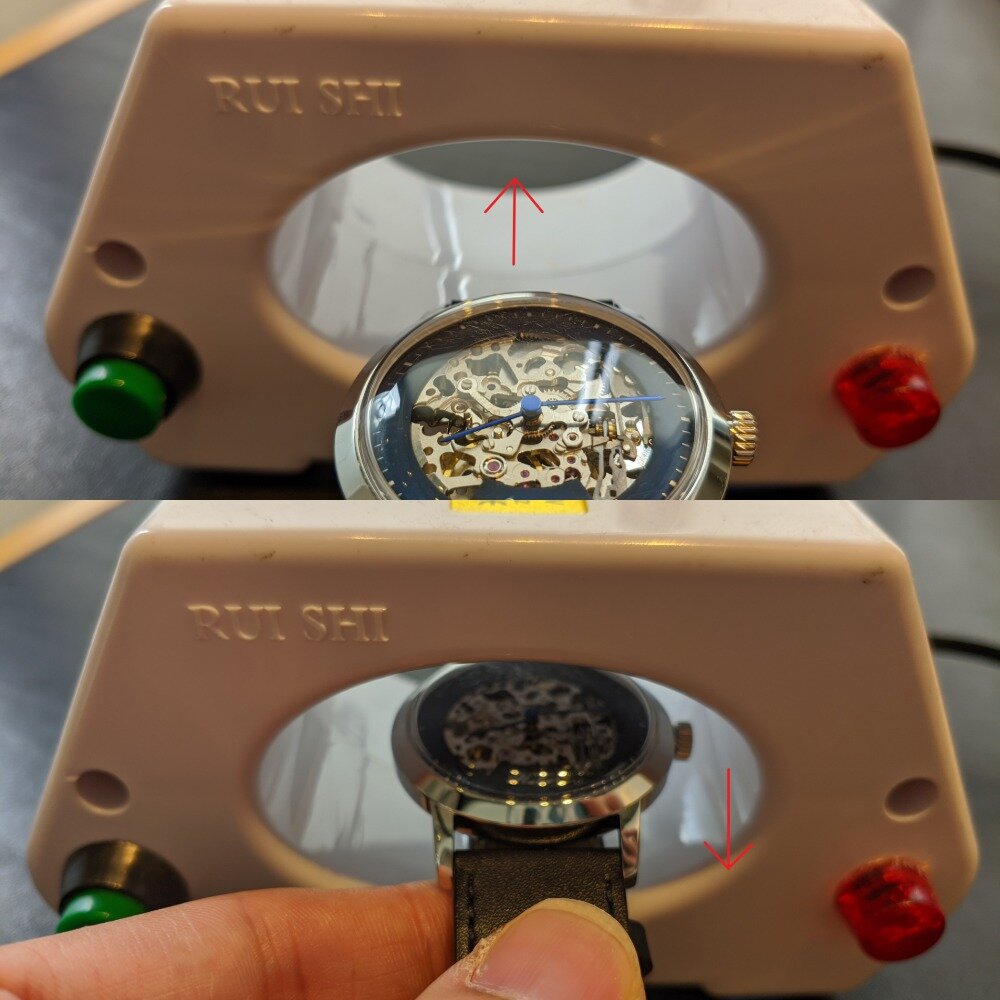How to Demagnetize a Watch
and magnetization test you can do at home
A demagnetizer is often an indispensible device if you own a mechanical watch
Sometimes after a trip, your watch runs a bit wild, gaining more than a minute per day. Most probably, your watch has been magnetized, and needs to be demagnetized before it can function properly again.
With the omnipresence of electronic devices nowadays, mechanical watches have never been more exposed to the risk of magnetism. Go through the scan at the airport custom, put the watch together with a mobile phone, rest your arm on a speaker, and the watch is magnetized. And this isn’t exclusive to worn watch either — sometimes even a new watch would come to your home magnetized as well, due to delivery process, storage location etc.
However pervasive it is, magnetism is not an irreversible problem, and if you know what to do, it should be a quick fix. In this article we are going to talk about what magnetism is, how to fix it, and how to protect your watch from further magnetism.
What is magnetism, and why is it bad for watches
A mechanical watch is made up of many metal parts, many of which are prone to magnetic influence. One part in particular, the hairspring, when magnetized, would affect the accuracy of a watch directly, as a part of the hairspring is stuck together by magnetism and thus reducing the effective length of the hairspring. This in turn causes the watch to run exceedingly quick. Of course, other parts can become magnetized and affect the accuracy of a watch, and in practice, magnetism can cause a watch to run very fast or very slow, depending on the parts affected.
Luckily, unless the magnetic force is of an unusally high level, the effect magnetism have on a watch is usually reversible. A magnetized watch demagnetized should have its function return to normal conditions.
How to tell if a watch is magnetized
The most prominent sign of magnetism is high degree of inaccuracy, usually being off by more than a minute per day. You can obtain a more precise reading by using a timegrapher (check out our guide on how to use a timegrapher). A magnetized watch usually gains more than a hundred seconds per day, and usually has an abnormally low amplitude, due to the restricted movement of the hairspring.
This is a typical reading of a magnetized watch on a timegrapher: low amplitude and unusually high rate.
To test for magnetism, there are two simple methods that you can do at home:
Put a compass near the watch, and observe if the needle on the compass is attracted by the watch at all. If so, the watch is magnetized.
There are apps that utilize the magnetic sensor on a smart phone to detect magnetism. Example of these is LEPSI on iOS, or Physics Toolbox Magnetometer on android, or in general apps that have the name “magnetometer” or “gauss meter” will do. Using these apps, first put the phone away from the watch, then put it near the watch. If it detects a significant change of magnetic strength near your watch, then your watch is magnetized.
You can use the built-in magnetic sensor in your phone to test for magnetism
How to demagnetize a watch
Once you’ve confirmed that your watch is suffering from magnetism, the solution is simple. Using a demagnetizer, the process takes as little as a minute. There are many styles of demagnetizer on the market, but they all work under the principle of generating randomized magnetic field to disrupt the ordered magnetic field in the watch to acheive the effect of demagnetization.
Here we will detail the process with the kind of demagnetizer that has a hole in its center. This kind of demagnetizer provides a stream of magnetic field. Another popular kind of demagnetizer is the pulse type, which sends out a pulse on the push of a button. In reality, all kinds of watch demagnetizer will work equally well, provided that you follow its instructions accordingly.
This stream type of demagnetizer can be turned on by pressing down on the button. Keeping the button pressed down, slowly put the watch from outside the loop to inside the loop, and then slowly take it out.
To demagnetize the watch, slowly put the watch into the hole, and then slowly pull it out,
Now you can check if the watch is still magnetized. You can repeat the process for a few times if the demagnetization is not satisfactory.
For the pulse type, put the watch on the demagnetizer, push the button, then rotate the watch 90 degrees, and push the button again. This type of demagnetizer emits a pulse of rapidly decaying strength. So it automatically disrupts the magnetic field in the watch and thus demagnetize the watch.
After this, test the watch on a timegrapher again. If the rate returns to normal, the watch is demagnetized successfully. It might be possible that after being magnetized, the rate is within a normal range but not a desirable range. If so, you may need to regulate the watch. You can follow our guide on how to regulate a watch.
How to protect a watch from magnetism
After demagnetizing a watch, you would want to minimize any further risks of magnetism. Otherwise, all your efforts in demagnetizing the watch would go to waste.
A general rule of thumb for protecting a watch from magnetism is twofold: avoid strong magnetism, and avoid prolonged exposure to magnetism. On one hand, you want the watch to stay away from strong magnetic field, which exists around microwaves, speakers, MRI scanner etc. On the other hand, the watch should not stay for a long period near magnetic objects. If you follow these rules, your watch should be free from magnetism.
But even if it gets magnetized again, you’ll know what to do with it now.














Blued hands and screws are ubiquitous existences in the history of watchmaking. Behind that frequent appearance though is a history and science that go beyond the aesthetic value of flame bluing.